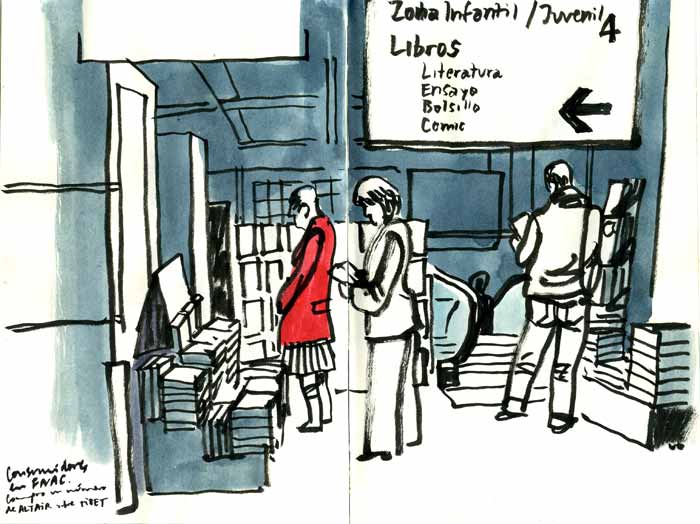The
presence given off by the buildings of Rome was very important. The desire was for important structures to dominate their surroundings. This showed the power and importance of the empire, especially the government. Significant buildings and structures were most often built with open spaces surrounding them to make them seem larger. The Baths of Diocletian was an enormous, opulent building, which greatly illustrates this. According to Roth, “Roman life focused on temporal comforts and pleasures, as the Roman bath well illustrates” (Roth 2007). Also, the Romans decorated usually on the façades of their buildings, giving an opulent
presence without spending money to decorate the entire exterior. Likened to this is the notion of “bread and circuses”, in which the government entertained the people and gave them what they wanted and needed in order to hide the messiness of politics. The best-known place in which “bread and circuses” took place during the empire was the Flavian Amphitheatre, better known as the Coliseum, which dwarfs many of our coliseums, seating “between forty-five thousand and fifty-five thousand people” (Roth 2007), definitely a large crowd to entertain.
The Romans certainly used Greek and Etruscan structures as
precedents. However, they changed them, often against their original intended use. The Romans took the orders, used by the Greeks for structural purposes, and made them purely decorative as engaged columns and pilasters, used only to show opulence. The iconicized Flavian Amphitheatre’s “stone arcades incorporated columns- unfluted Doric on the ground floor, then Ionic, Corinthian, and finally Corinthian pilasters on the uppermost, fourth story” (Roth 2007), which also creates a hierarchy and timeline, as was identified in class. Likewise, when designing, we should look carefully at
precedents and use them wisely, always remembering to make what we find our own. This also applies to forms of structures and society, which have continued from the time of the Roman Empire. We use many aspects of their culture and building styles still today. We also worked with
precedent images in Perception and Communication, looking at artists’ work to mimic their style in our own drawings.
In the decorated facades and interiors of Roman buildings,
moments are seen which convey the opulence portrayed by them. In Pompeii,
moments were frozen in time as Mount Vesuvius’ lava flowed over the city and its inhabitants, who were found in “voids filled with skeletal bones” (Roth 2007), and the buildings and artifacts were found in similar states. As morose at it may seem, the fact that this happened allows us a window to the world of the Romans, since “the destruction of Pompeii… in fact preserved a range of different house types, from small artisans’ residences to large patrician residences and expansive country villas” (Roth 2007). The entire Roman time period, from development, to rise, to fall, can be seen as a
moment in which many changes occurred, both in architecture and design, and in the social/ political realm.
The Roman baths took the Basilica form. This form later became integral to Christian Churches. This form has
duality, seeing as it stood for both Rome and its worldly “pagan” ways and new Christianity, in which the focus is shifted to heaven and the afterlife. Interestingly enough, however, the Christian churches were highly decorated, often the most so buildings at the time. If the afterlife is so important, why are these opulent buildings needed? Certainly, great expanses of space were needed for the growing numbers of people attending services, so much so that the focus of the crumbling empire turned to “the problem of how to house communal groups of worshippers” (Roth 2007). The decorative nature of Churches quickly grew, eventually becoming the flamboyant Gothic cathedrals so well known today. There also exists a
duality between the Western Empire and the Eastern Empire.
The
metric system of measurement is mostly universal, thus being a standard. The architecture of Greece and Rome both transformed into this “standard” form of the word
metric. A
metric can also be a system, such as the water in the Baths of Diocletian, vital to their function. Buildings became measured by the grandeur created by the Greeks and Romans, leading to the grand churches and cathedrals of Christianity
The
presence of buildings and artifacts are enforced by the
moments created in them, and sometimes, created by them. We can learn how to make special
moments in our designs by looking at
precedents, which people have done for hundreds of years. Since this has been occurring,
metrics have emerged, standards which hardly seem like
precedents any more because they have been used for so long. Sometimes, by combining these many
voices, a
duality emerges in the design, sometimes making it fail, sometimes making it interesting, and sometimes making it both.
Roth, Leland, M. (2007). Understanding Architecture: Its Elements, History, and Meaning. Boulder, Colorado: Westview Press.



























 BIG
BIG








